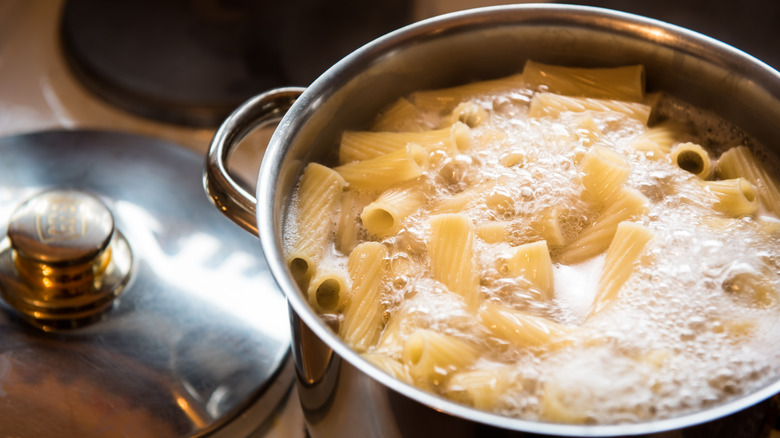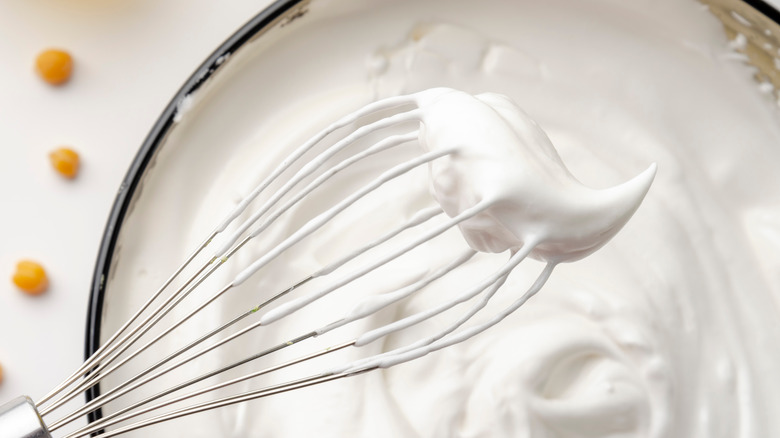How To Stop Chickpea Pasta From Foaming So Much
Chickpea pasta is made from a gluten-free flour base that comes from dried and ground garbanzo beans (otherwise known as chickpeas). The bean-based flour creates pasta that is high in protein, fiber, and iron, along with a number of different antioxidants, vitamins, and minerals (via USDA). With its array of benefits and shapes, chickpea pasta is a great substitute for the traditional stuff. But be warned, the same substance responsible for fluffy hummus is also the reason chickpea pasta tends to overflow with foam while boiling.
Even though it has no effect on the taste or nutritional value of the pasta, this foam can be a nuisance. If you're used to leaving your pasta to boil until the timer goes off, cooking chickpea pasta will require a bit more attentiveness than you may be used to. As a legume, chickpeas are coated in an organic, soapy substance known as saponins that get released as they cook. When mixed with the bean's proteins and carbs, this substance thickens even more, creating a layer of foam that will quickly overflow if the right precautions aren't taken (via Veg FAQs).
Anti-foam tips
To keep the foam at bay, watch over your chickpea pasta and scoop it out from the top of the water with a large spoon as it builds (via Veg FAQs). Technically, you don't have to do this, but you'll probably want to. Not only will it mean less spilling, but you can save the foamy stuff, otherwise known as aquafaba, and use it to create a fancy French pudding for dessert, or mix it into your go-to hummus recipe to bring the texture up a notch.
But if pudding and hummus aren't necessarily your thing, there are other ways to keep the foam down. Adding oil to boiling water is a common practice when boiling traditional pasta, but a lot of people don't know that it's actually done to prevent the water from overflowing. Because the oil works to disrupt surface tension, the same trick can be used to decrease the amount of foam chickpea pasta produces (via Insider). Banza also recommends using a large pot with lots of water and cooking your pasta on a lower heat setting.

